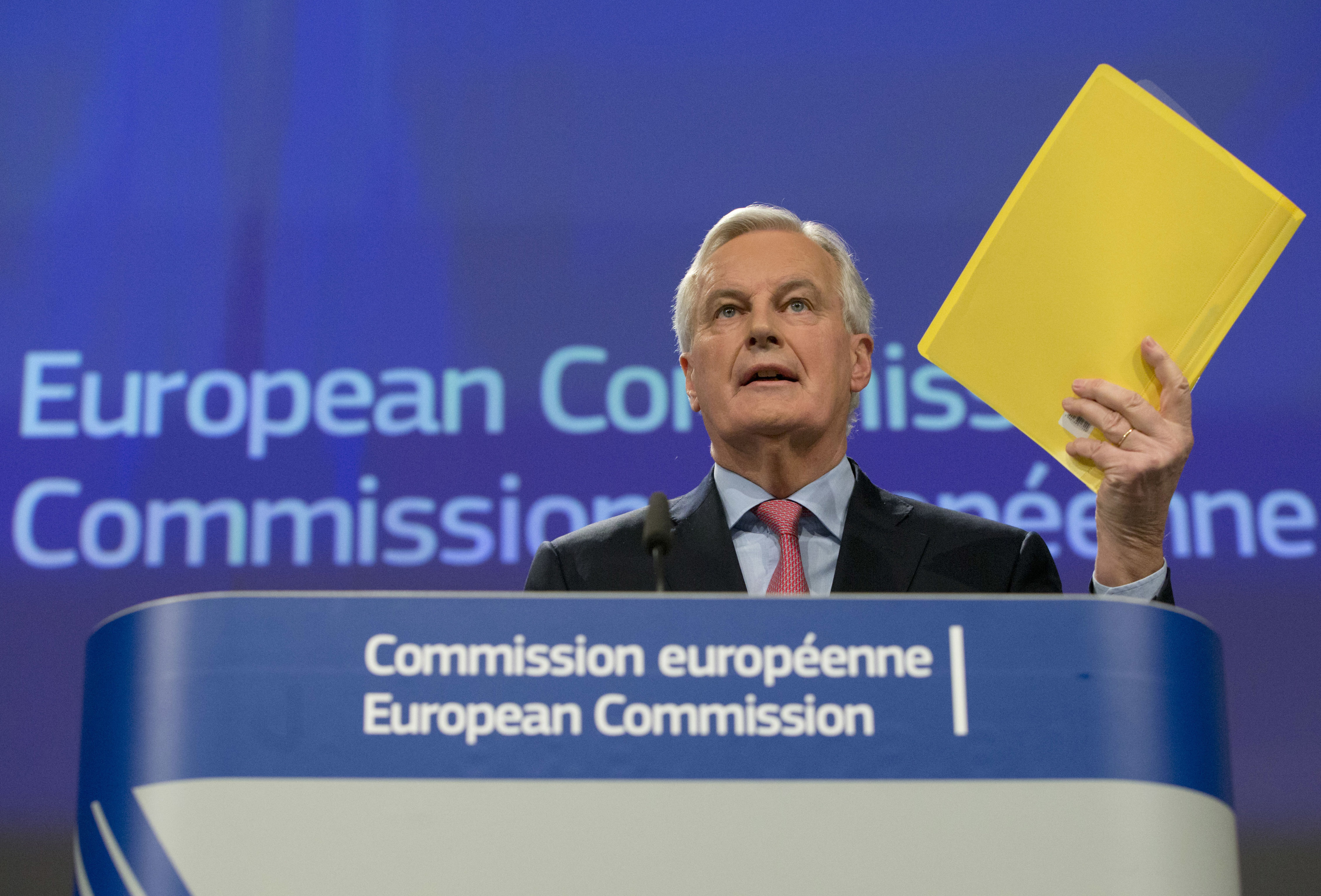
By LORNE COOK
JILL LAWLESS
Associated Press
BRUSSELS (AP) — Concerned that time is fast running out, the European Union moved Wednesday to force Britain’s hand in Brexit negotiations by publishing a draft text that distils into legal language what they have — and even what they have not — agreed so far about Britain’s departure.
British Prime Minister Theresa May immediately branded part of the 120-page document unacceptable and a likely threat to her country’s constitutional order. Britain officially leaves the EU on March 29 next year but Brexit talks must conclude this fall so that parliaments have time to ratify the final withdrawal agreement. The new text summarizes all aspects of the talks so far, but takes a tough line on issues where British input is lacking.
“If we want to succeed in these negotiations, and I want to succeed, we must accelerate,” EU chief Brexit negotiator Michel Barnier said Wednesday. “In 13 months the U.K. will no longer be a member of the European Union. That’s what it wanted.” While rumors about the document’s content angered some on the other side of the English Channel even before it was made public, Barnier told reporters that “this draft text contains no surprises for our British friends.”
EU leaders have been pushing May to provide more details about how she sees the border between Ireland and Northern Ireland operating, how long a transition period should last to help ease Britain out from next year, and to explain her government’s vision of their future relations. But they have been frustrated by the lack of feedback, with negotiations essentially at the half-way mark. By translating progress, or the lack of it, into a legal text, the EU is ramping up pressure on May, whose government is creaking amid divisions from within and growing opposition pressure from across the aisle in parliament.
By far the most contentious section of the text — which is a draft and likely to be significantly altered — concerns the transit of goods, services and people across the border between EU member state Ireland and Northern Ireland, which is part of the United Kingdom.
Britain and the EU agreed in December that the all-but-invisible border would remain open after Brexit in 2019, but they left it unclear how that would happen in practice Lacking “agreed solutions” so far, the EU draft suggests that Northern Ireland would remain within the bloc’s customs union, creating a virtual border in the Irish Sea between Britain and its own territory where customs checks would have to be carried out.
But May said this proposal would “undermine the constitutional integrity of the U.K.”
“No U.K. prime minister could ever agree to it,” she told British lawmakers, and said her government remains “absolutely committed” to avoiding a hard border. But Barnier suggested that “technical solutions” could be found to overcome some customs issues, and
denied the EU is foisting any internal border on Britain.
“We are trying in a practical, pragmatic way using the tools at our disposal to find solutions,” he insisted. He refused to accept that the document is part of a game of brinkmanship, saying: “I never bluff.” Ireland welcomed the first draft and said it contains “the necessary legal provision to implement the backstop” that would avoid a hard border between Britain’s territory and the EU member state.
“We are looking forward to the further detail” from May, a government statement said.
Another point likely to rile London is the transition period aimed at avoiding any policy cliff edge next year that would upset businesses, trade and markets. The text states that it will end on Dec. 31, 2020, a practical deadline as the EU’s current long-term budget, to which Britain contributes, expires then. May’s government is seeking more time, but because it has suggested no other date and because legally the period cannot remain open-ended, the EU’s preferred date is the one being used.
Beyond that, EU leaders want to endorse a set of guidelines at their next summit on March 22-23 for negotiating the shape of future relations between the 28-member bloc and Britain, the first country ever to leave. EU Council President Donald Tusk, who chairs summits of heads of state and government, said Friday that the EU will do that in three weeks “whether the U.K. is ready with its vision of our future relations or not. Naturally it would be much better if it were, but we cannot stand by and wait.”
Adding to the pressure, Tusk holds talks with May in London on Thursday, on the eve of a major speech she plans to give which officials say will set out her government’s vision of future relations with the EU. Meanwhile, Brexit talks have plodded on at a lower, technical level since December. A new round is scheduled for next week, as are EU talks on the guidelines for negotiations concerning future ties.



















